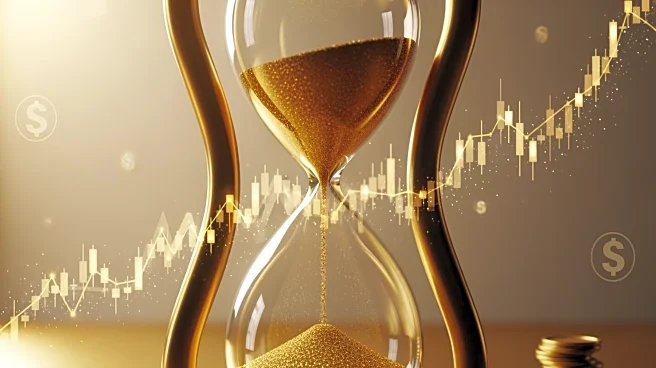What's Happening?
Gold futures experienced a significant rally on Monday, increasing by $112 to trade at $4,120.20 per troy ounce. This surge suggests the end of a two-week consolidation period, with the precious metal potentially resuming its historic advance. The December
contract had previously reached an all-time high before undergoing a sharp correction. The rally is driven by expectations of a Federal Reserve interest rate cut in December, which typically supports gold prices by reducing the opportunity cost of holding non-yielding assets. Additionally, optimism regarding a resolution to the ongoing government shutdown has contributed to the bullish sentiment.
Why It's Important?
Gold's performance is a key indicator of market sentiment, particularly in times of economic uncertainty. The anticipation of a Federal Reserve rate cut reflects broader concerns about economic stability and inflation, which have historically driven investors towards gold as a safe haven. The potential resolution of the government shutdown further stabilizes market conditions, providing a conducive environment for gold's continued rise. This development is significant for investors and policymakers, as it impacts asset allocation strategies and monetary policy decisions.
What's Next?
Market participants are closely monitoring the Federal Reserve's actions, with the expected rate cut in December likely to influence gold prices further. The resolution of the government shutdown will also play a critical role in shaping market dynamics, as it restores confidence and allows for the release of delayed economic data. Analysts maintain a bullish outlook for gold through year-end and into 2026, suggesting that if current sentiment holds, gold could challenge or exceed recent record highs.
Beyond the Headlines
The rally in gold prices highlights the ongoing challenges in managing inflation and economic policy. The reliance on gold as a hedge against economic instability underscores the need for effective monetary policy and fiscal management. Additionally, the consolidation phase and subsequent breakout reflect the complex interplay between technical analysis and macroeconomic factors in the commodities market.














